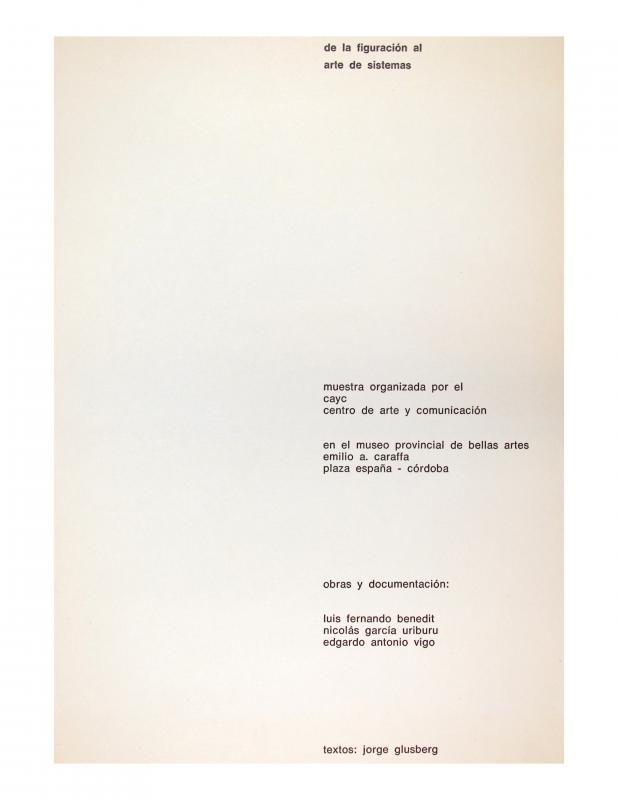Ever since it was founded, the CAYC (Centro de Arte y Comunicación), helmed by the cultural promoter, artist, and businessman Jorge Glusberg, was intended as an interdisciplinary space where an experimental art movement could flourish. The establishment of collaborative networks connecting local and international artists and critics played a key role in this process. The exhibitions shone a light on these exchanges, in which overviews of trends or individual artists introduced the innovations of international contemporary art and made Argentine and Latin American artists better known on the global scene.
The critic introduced the art category that “is about processes rather than the finished products of good art” in Argentina at the exhibition De la Figuración al Arte de Sistemas (Museo Emilio Caraffa, Córdoba, 1970) (doc. no. 761141). In this context, art is not about the creation of objects but about an expression of reality, a process which becomes one of the artist’s materials. Researching events, taking part in social and cultural occasions, developing new ways to question the world, expressing oneself in political terms (which was the focus for some artists in the Southern Cone in those days), was a one of the modalities of “arte de sistemas”
At the first Arte de Sistemas exhibition, presented in 1971 at the Museo de Arte Moderno in Buenos Aires, Glusberg defined “systems art” as an art practice based on an understanding of the systems and processes that are used to organize the contemporary world’s experience. This definition was close to “systems esthetics,” the theory published in 1968 by the U.S. critic Jack Burnham. Over time, in Argentina, the term was used to refer to several dissimilar trends and movements, such as art as an idea (or Conceptual art), ecological art, poor art (Arte Povera), cybernetic art, proposal arte, and blatantly political art, a local response driven by the authoritarian regimes and military coups d’états in South America.
At the III Bienal de Arte de Coltejer (Medellín, May 1972), the CAYC presented three exhibitions: Arte de Sistemas, Arte de Sistemas en Argentina, and Hacia un perfil del arte latinoamericano. Though the first of these was a repeat of the one that was staged in 1971 (including international artists), Glusberg’s essay in the catalogue for the Colombian biennial notes that “arte de sistemas” took on a different, more flexible connotation that became associated with an eventual regional Latin American identity. The spread of the term—throughout the 1970s as it evolved from a process of assimilation to one of distinction—was the basis of the CAYC’s strategy to raise its international visibility.

